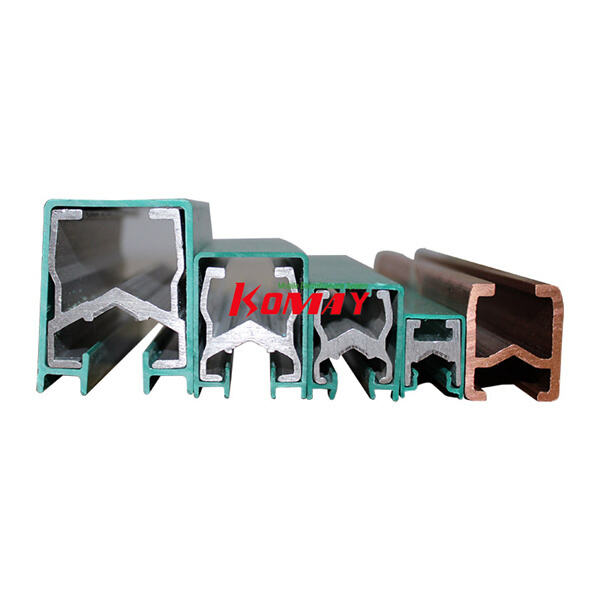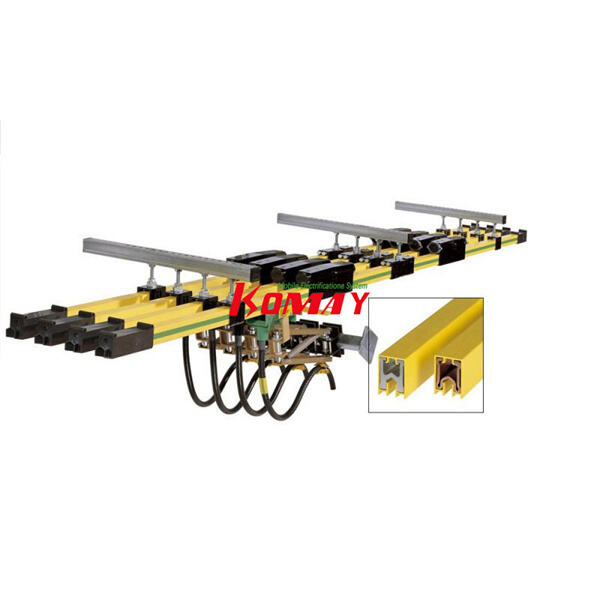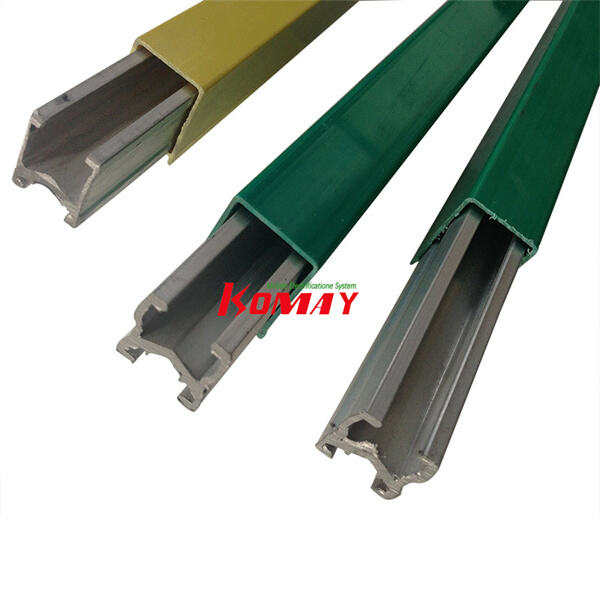Have you ever wondered how trains and railways operate? It’s all about electricity! Electric power is used in trains to transport people and goods from point A to point B. Think of a huge mighty engine running on electrical power! But with this power comes responsibility. That's what insulated power rails are built for! They assist in ensuring trains can travel smoothly with belligerents.
Insulated power rails are basically electric current tracks that power the trains in a safe way. They’re like the train’s lifeline, Fuchs said. They ensure that all will remain safe by preventing electrical shock and other mishaps that could arise if you used regular power rails. They are built using special materials that can withstand adverse weather conditions like rain and snow, along with wear from continuous use by multiple passing trains. They undergo tests to ensure that they are extremely safe and reliable, so they can perform very well and do not break down easily.
When it comes to train travel, using insulated power rails is extremely important. Regular power rails can pose an electrical shock hazard or even a fire hazard in wet or rainy conditions. This is extremely dangerous for both passengers and workers. Insulated power rails help to solve these issues and create a safer environment both for those on the locomotive and the workers around the tracks. And they require less fixing, which conserves time and money. This ensures trains will run and arrive on-time.

Power rails are insulated so that they're not only safe, but they also optimize train performance. Conventional power rails either rely on wires or a third rail to provide power to trains. But that can get diluted somewhere in between, slowing things down. This use of the power transfer technology is in insulated power rails. This technology delivers power directly to the train’s motors, which is somewhat like giving the train a direct shot of electricity. This allows trains to travel faster and consume less energy in movement. As a result, trains using insulated power rails can travel much farther and carry heavier loads without requiring additional power.

The use of insulated power rails in railways has several advantages. First and foremost, they keep passengers and workers safe, which is paramount. Second, they help the train systems run better and more efficiently, saving energy, for example, and extending the life of equipment. Insulated power rails also require less maintenance and withstand severe weather, which leads to less failures. This saves money for the railway companies and decreases the amount of time that trains can’t run. They also reduce pollution, which is great for the environment.

What they don't see is that at KOMAY, we do care: We care about the environment and we care about our insulated power rail solutions. With our products, we eliminate pollution while in transportation and clean the world. A cleaner world for all the people out there through our insulated power rail with the power transfer technology waste less energy. We think it is essential to look after the land for future generations, and want to play our part.
We have assisted a variety of customers in solving their problems with Insulated Power Rail for cranes, electric hoists and high-building factory power distribution.Backed up by a wealth of industrial experience on Mobile Power Supply System industry, we offer our customers a wide range of lifting equipment and components that have been designed to be scientifically sound that is safe, with good performance, effective operation and low maintenance cost. Our all-in-one services not only save our customers time but also minimize their cost. We offer the following support services that ensure that the equipment is running smoothly for customers' lifting and handling devices: Presale Technical Support, After-sale Maintenance, Spare Parts Support, and customized solutions.
KOMAY's Insulated Power Rail designs and multiple power supply systems guarantee safety and performance that is not making compromises on safety. Our designs optimize space efficiency, making the ideal choice for situations in which space is limited in addition to facilitating quick installation and integration. We offer a wide range of power supply solutions that are tailored to different operational requirements such as lifting equipment and industrial machinery. Each system prioritizes safety with sophisticated safety features for equipment and personnel. Committed to high-performance, our systems exceed industry standards through rigorous testing and quality assurance. The combination of compact design, flexibility and dependability establishes KOMAY as a reliable supplier to enhance efficiency and safety in operations. We are constantly innovating to help our customers achieve their goals with confidence.
KOMAY offers comprehensive Insulated Power Rail Services, which allows KOMAY to work with clients to design custom solutions to fulfill their requirements. Our production capabilities that is backed by over 20 years' experience in the field which allows us to handle massive orders with ease while maintaining the highest standards of quality. We provide reasonable prices, ensuring that our products are affordable for a wide range of clients, which reflects our commitment towards cost-effectiveness. KOMAY is a trusted supplier for businesses seeking top-quality portable power solutions. By integrating customisation and affordable pricing, KOMAY establishes itself as a trusted business partner. Our skilled team is in constant contact with our customers throughout the whole process, from designing and production through delivery, to ensure that all components of our OEM solutions meet customer expectations. We are committed to providing top-quality products and services that help our clients succeed in their respective industries.
WUXI KOMAY ELECTRIC EQUIPMENT CO. LTD. is a top-quality company in the sector of mobile electric systems. With over 20 years' experience in production, we are a leader in this sector. We are experts of the power distribution system and the complicated procedures involved. Our major products are Insulated Power Rail, Enclosed Conductor Rails, Safety Power Rails, Multipolar Busbar, Busway Systems, Cable Trolleys, Cable Chains, Overhead Crane, AGV Robot, Electro-Hydraulic Drum Brake and more. The essential features of products are Compact arrangement, corrosion resistance, and simple assembly. The products is suitable especially for overhead and elongated tracks for cranes, monorails, port machines, stacking systems, as well as many other applications for supplying power to moving power loads. Our Products are certified by CE and export to Europe, America, Middle East, Africa, Southeast Asia etc. Other countries and areas. We appreciate the significance of reliability and efficiency in power distribution. our long-standing experience enables us to provide tailored solutions that cater to diverse requirements of operation.